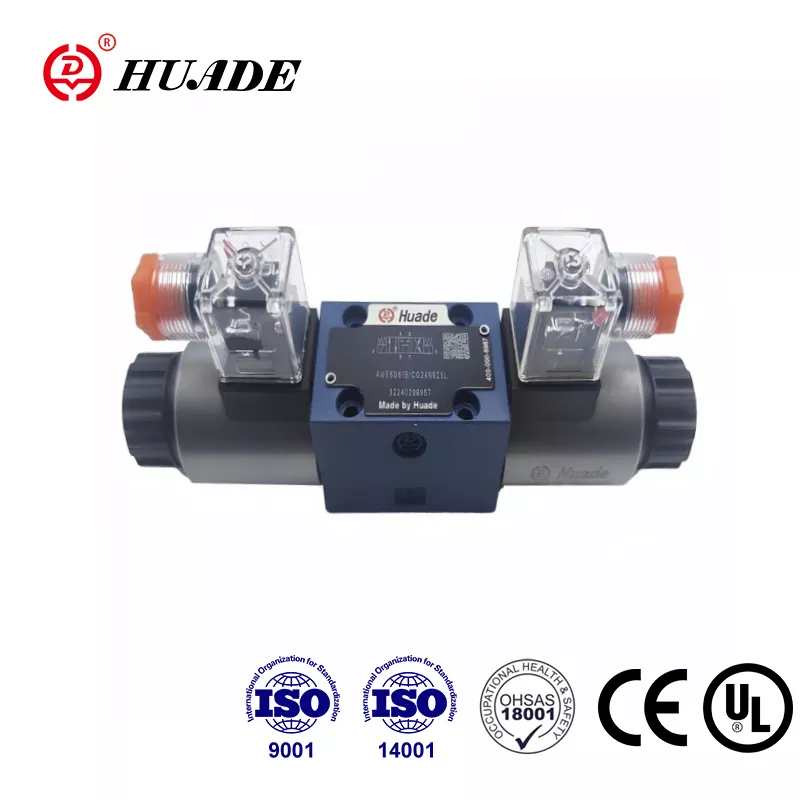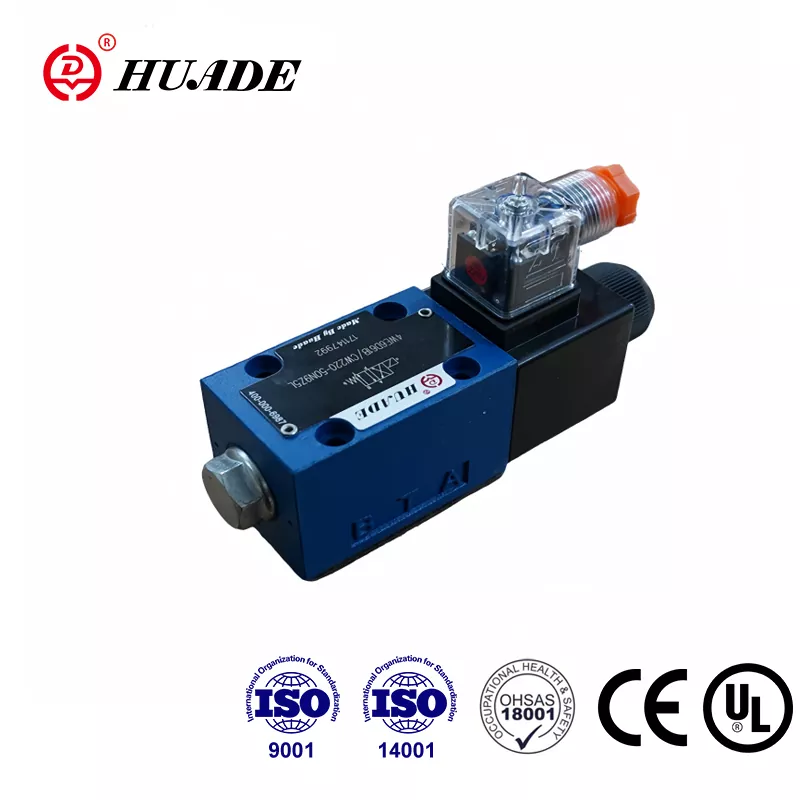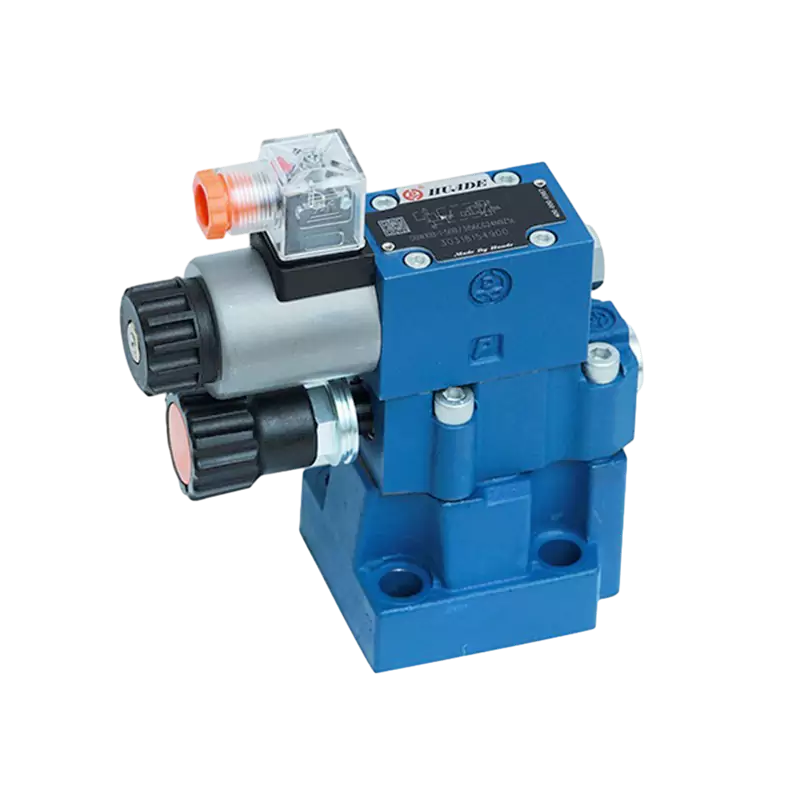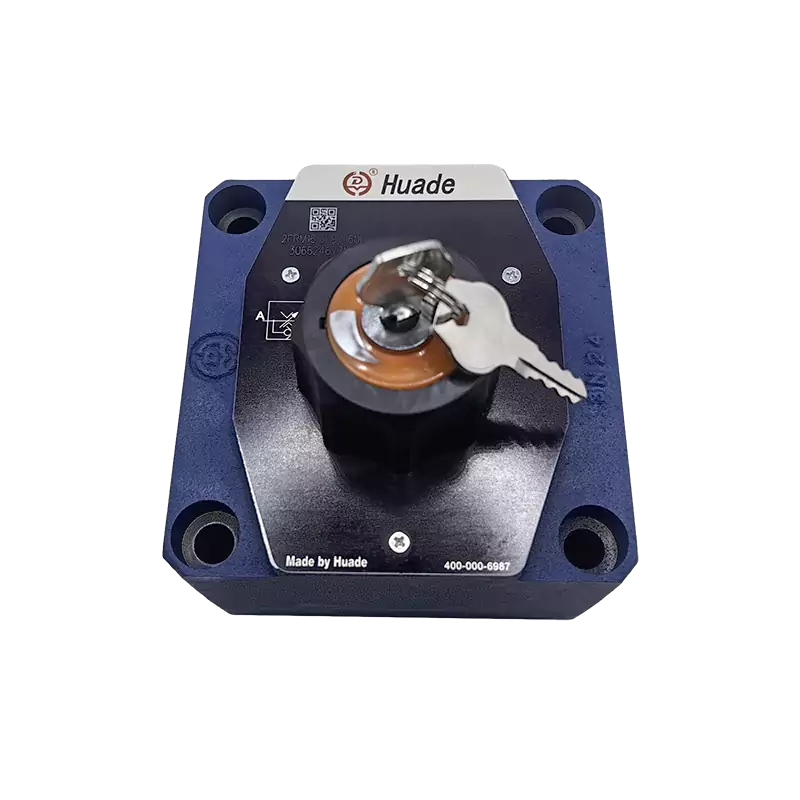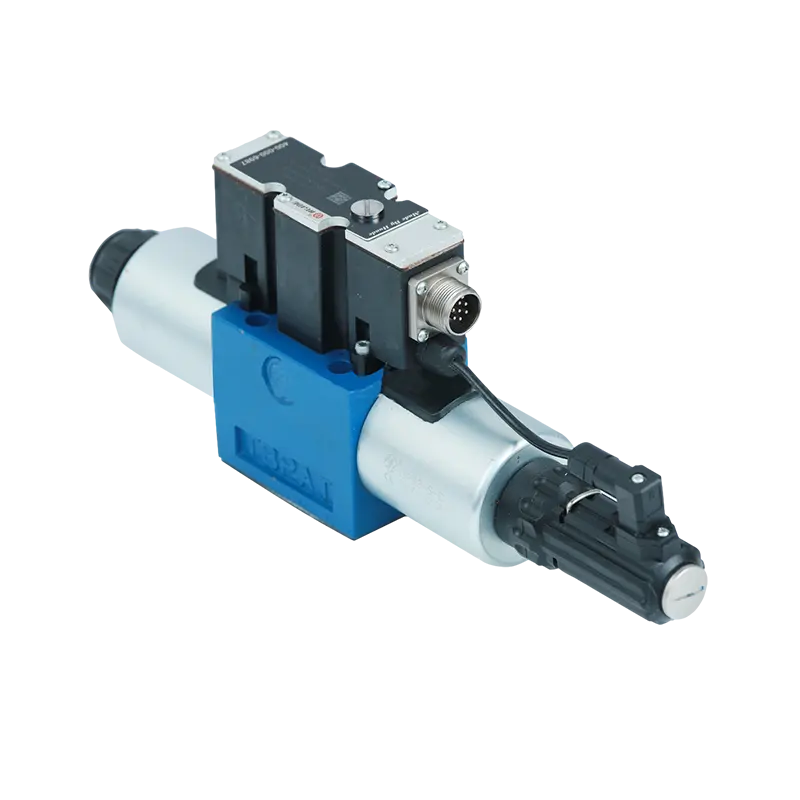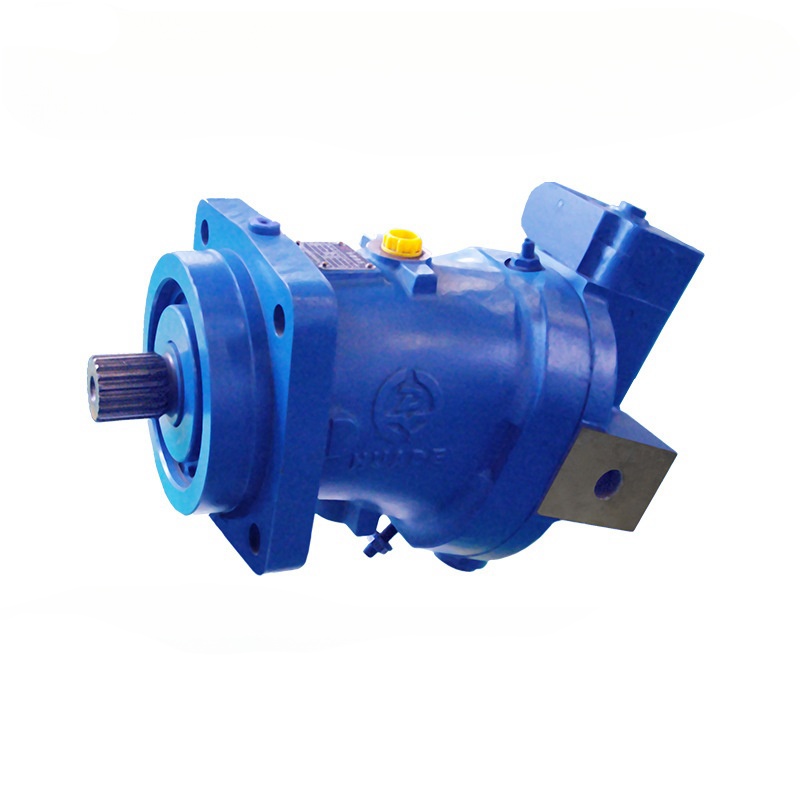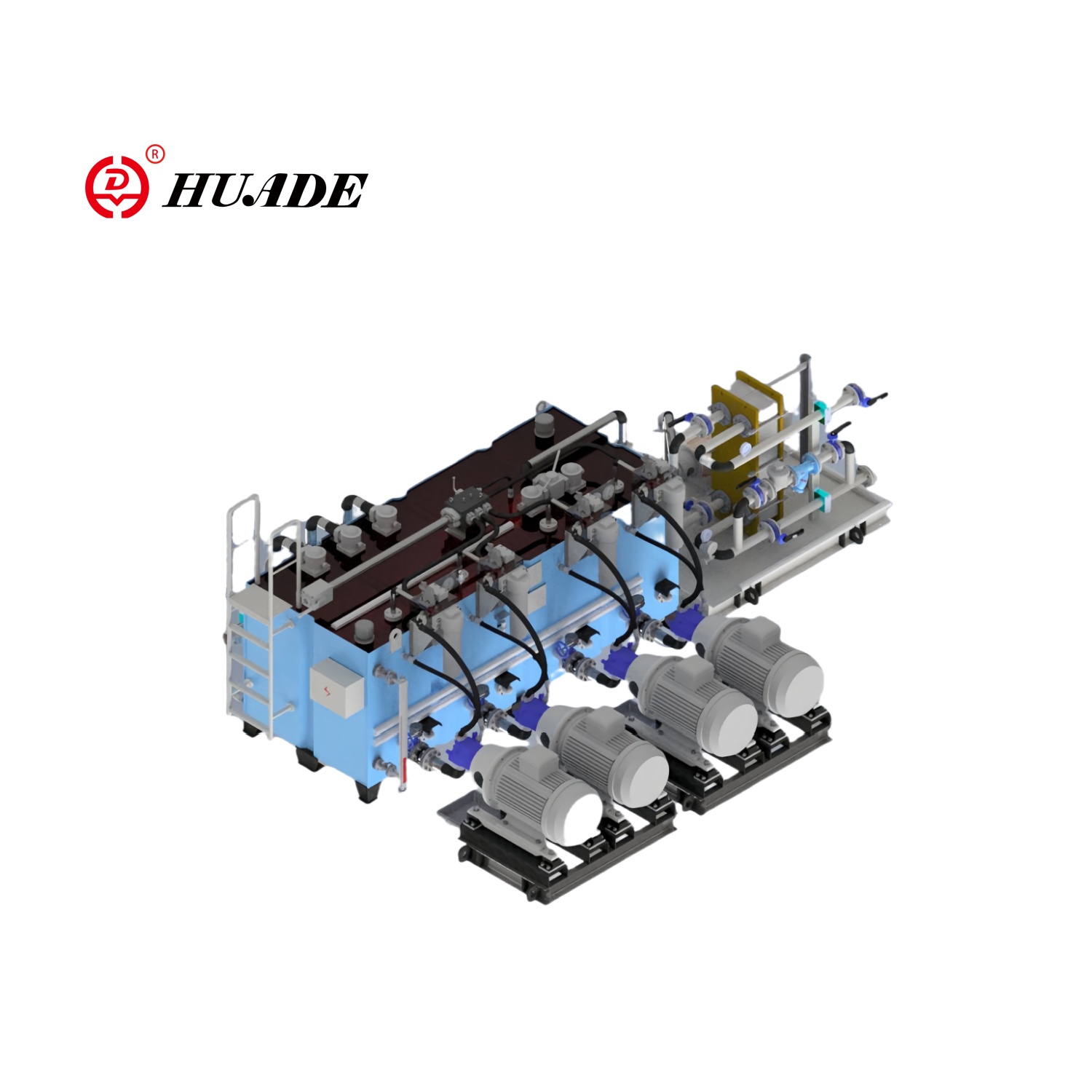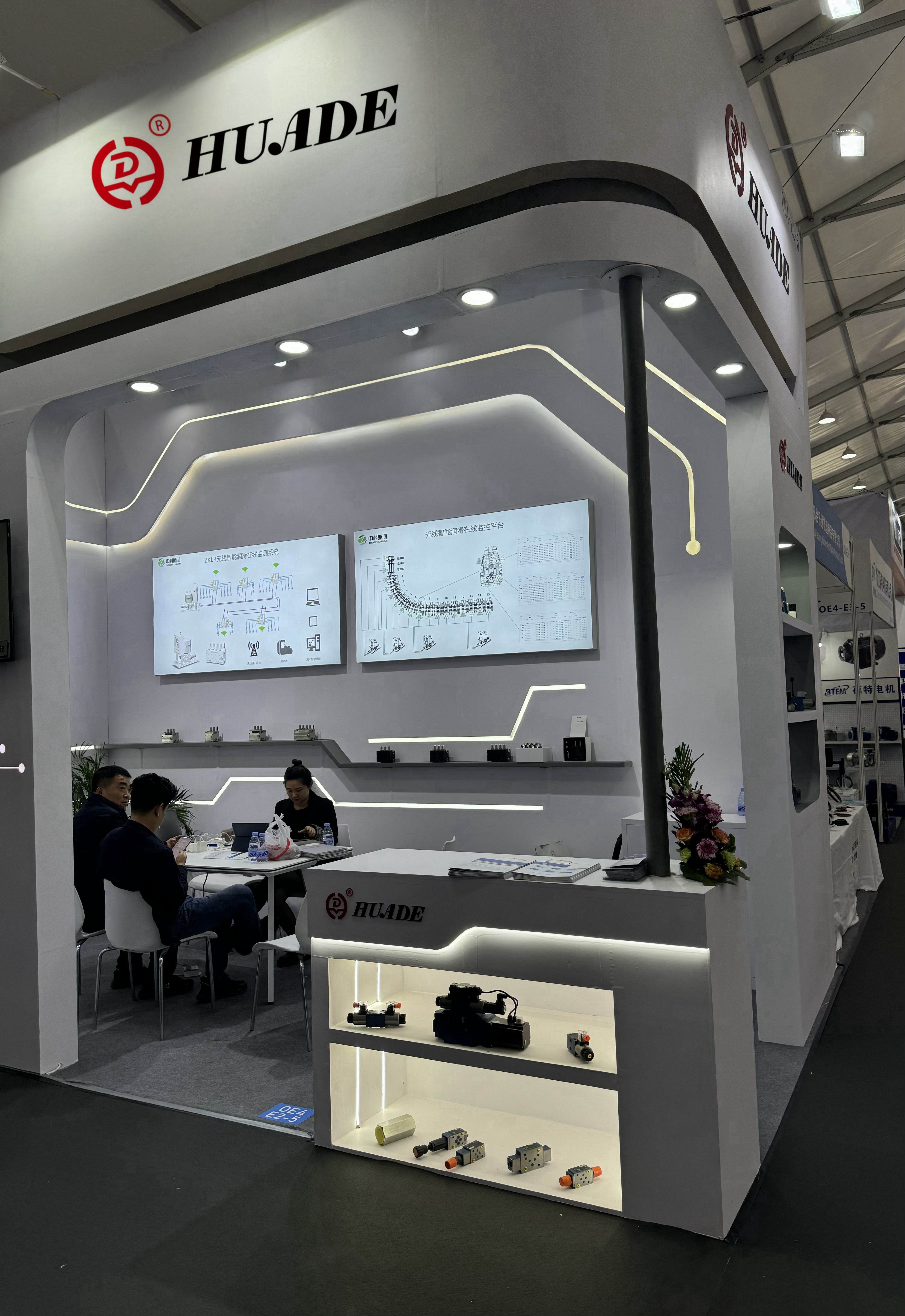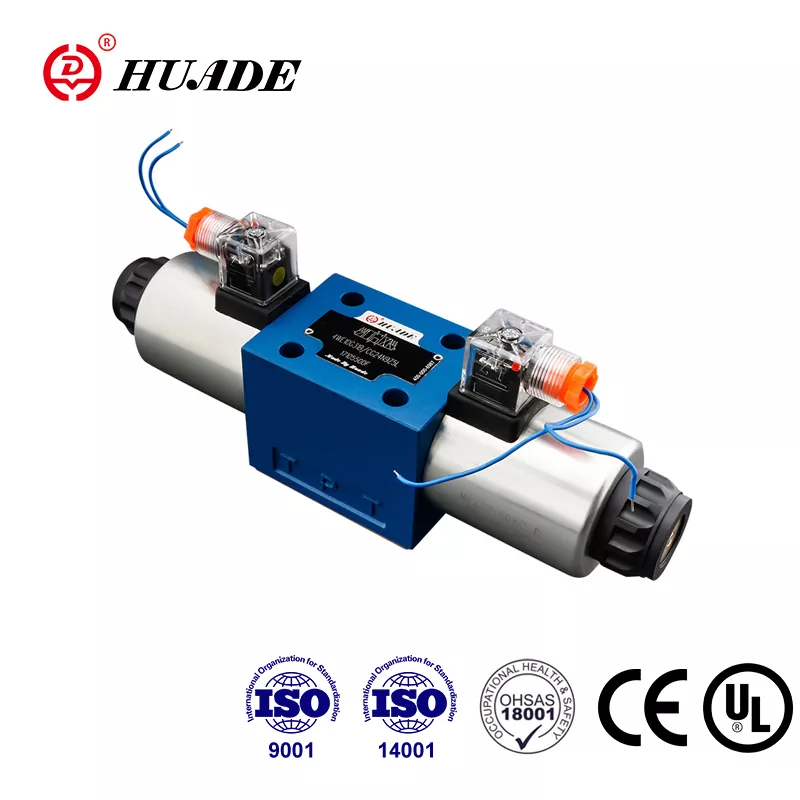When working with hydraulic systems, choosing the right directional control valve can make all the difference in your equipment's performance and reliability. The Rexroth 4WE 6 Y directional control valve has earned its reputation as a dependable component in industrial hydraulics, and understanding what makes it special can help you decide if it's the right choice for your application.
What Is a Directional Control Valve?
Before diving into the specifics of the 4WE 6 Y model, it helps to understand what directional control valves do. These valves are fundamental components in hydraulic systems that control where hydraulic fluid flows. By changing the path of the fluid, they determine which direction a cylinder moves or whether a motor turns one way or another. Think of them as traffic controllers for hydraulic fluid, directing it to where it needs to go.
The Rexroth 4WE 6 Y directional control valve falls into the category of solenoid-operated valves, which means it uses electrical signals to switch the valve's position. This electrical control makes it easy to integrate into automated systems where precise timing matters.
The Basics of the 4WE 6 Y Design
The 4WE 6 Y is built to the NG 6 size standard, which is one of the most common sizes in industrial hydraulics. This size is also known as CETOP 3 or ISO 4401-03 in different parts of the world. What this means for you is that the valve will fit standard mounting patterns, making installation straightforward and replacement easy if needed down the road.
The valve operates as a 4-way, 2-position valve. In simpler terms, it has four ports for connecting hydraulic lines, and it can switch between two different flow configurations. The "Y" in its name refers to the specific spool design inside the valve, which determines exactly how fluid flows in each position.
One notable feature of the 4WE 6 Y directional control valve is its direct-acting design. Unlike pilot-operated valves that need a small control signal to move a larger main valve, this valve's solenoid directly moves the spool that controls fluid flow. This design typically offers faster response times, though it does mean the valve works best with moderate flow rates rather than extremely high ones.
How the Y-Spool Configuration Works
The Y-spool configuration in the Rexroth 4WE 6 Y directional control valve creates a specific flow pattern. When the solenoid is not energized, the valve sits in its rest position. In this state, pressure from the pump connects to one work port while the other work port drains to the tank. When you energize the solenoid, the spool shifts to reverse these connections.
This switching behavior makes the 4WE 6 Y particularly useful as a pilot valve. In many hydraulic systems, especially those with large main valves, the 4WE 6 Y serves as the control brain that tells the bigger valve what to do. It sends pilot pressure to one side of the main valve or the other, causing that larger valve to shift and handle the heavy flow requirements.
The valve uses what's called a detent mechanism in many configurations. This means once you energize the solenoid and the valve switches position, it stays there even after you cut the power. It won't switch back until you energize it again. This feature saves energy since you don't need to keep the solenoid powered continuously.
Pressure and Flow Capabilities
The Rexroth 4WE 6 Y directional control valve can handle working pressures up to 350 bar at its main ports, which translates to about 5,000 psi. That's considerably higher than many economy valves on the market. The tank port can handle up to 160 bar in standard versions, with some models rated for 210 bar.
For flow capacity, the valve can manage up to 80 liters per minute, or roughly 21 gallons per minute. This makes it suitable for mid-range hydraulic applications. If your system needs to handle larger flows, you'd typically use this valve as a pilot control for a bigger main valve rather than handling all the flow directly.
It's worth noting that these ratings represent maximum capabilities under specific conditions. In real-world applications, the actual pressure drops and flow handling depend on factors like the viscosity of your hydraulic fluid and the specific flow paths through the valve in each position.
The Wet-Pin Solenoid Technology
One of the key features that sets the Rexroth 4WE 6 Y directional control valve apart is its wet-pin solenoid design. In this configuration, the solenoid's plunger sits directly in the hydraulic fluid rather than being sealed away from it. While this might sound unusual, it actually provides several advantages.
The hydraulic fluid acts as both a coolant and a lubricant for the solenoid. This helps the solenoid last longer and operate more reliably over millions of cycles. The fluid absorbs heat generated by the electromagnetic coil and carries it away, preventing overheating that could damage the coil or reduce its magnetic force.
The wet-pin design also means the solenoid can be removed and replaced without draining the hydraulic system or breaking into pressure-containing components. You can even rotate the coil 90 degrees or completely around in some models to make the electrical connection more accessible for your particular installation.
However, this design does place certain requirements on your hydraulic fluid. The oil needs to be compatible with the solenoid's internal components. Rexroth specifically warns against using hydraulic oils with certain zinc-based additives, as these can form deposits that clog the valve's small internal passages over time.
Fluid Compatibility and Cleanliness
The 4WE 6 Y directional control valve works with standard mineral hydraulic oils as well as several types of fire-resistant fluids. The standard seals are made from NBR (nitrile rubber), which handles most mineral oils and works across a temperature range from -30°C to +80°C. If you need compatibility with different fluids or higher temperatures, FKM (fluorocarbon) seals are available as an option.
Keeping your hydraulic fluid clean is critical for the long-term reliability of the Rexroth 4WE 6 Y directional control valve. The valve requires fluid cleanliness of ISO 4406 class 20/18/15 or better. In practical terms, this means you need effective filtration, typically with filters rated at 10 microns or finer.
Contaminated fluid is one of the most common causes of problems with directional control valves. Particles in the fluid can scratch the precision surfaces of the spool and bore, increasing internal leakage over time. They can also cause the spool to stick, leading to slow or incomplete shifting. A properly maintained filtration system prevents these issues and extends the valve's service life significantly.
Electrical Options and Connections
The 4WE 6 Y directional control valve comes with various voltage options to match different power systems. Common choices include 24V DC, which is standard in many industrial control systems, as well as AC voltages like 110V or 230V. The valve's power consumption is typically around 30 watts.
When you order a valve, the model number tells you exactly what voltage it needs. For example, "G24" in the model designation means 24V DC, while "W230" indicates 230V AC. The electrical connection usually comes as a standard 3-pin connector that meets DIN EN 175301-803 specifications, though other connector types are available.
Some versions of the valve include a manual override feature, typically designated as "N9" in the model code. This allows you to manually push the spool to shift the valve when electrical power isn't available, which can be helpful during setup or troubleshooting. However, this manual override has limitations and should only be used when tank pressure is below 50 bar.
Installation Requirements
Installing a Rexroth 4WE 6 Y directional control valve correctly is straightforward but requires attention to detail. The valve mounts to a standard NG 6 manifold or subplate using four mounting bolts. The mounting surface needs to meet specific flatness and smoothness requirements, typically no rougher than Rz 4, to ensure proper sealing.
Torque specifications matter more than you might think. Rexroth specifies tightening the mounting bolts to 9 Nm for standard metric bolts. If you're using certain imperial-sized bolts, the specification changes slightly to account for different thread characteristics. Under-tightening the bolts can lead to external leaks, while over-tightening can distort the valve body and cause the spool to bind.
When installing the valve, make sure all port connections are clean and free of debris. Even small particles introduced during installation can cause problems later. It's also good practice to verify the electrical connections before applying hydraulic pressure, ensuring the valve shifts properly and doesn't have any wiring issues.
Performance Characteristics
The Rexroth 4WE 6 Y directional control valve offers response times in the range of 20 to 70 milliseconds when energizing and 10 to 60 milliseconds when de-energizing. These times can vary based on factors like fluid viscosity, operating pressure, and flow conditions.
Like all spool-type valves, the 4WE 6 Y has some internal leakage by design. Small amounts of fluid slip past the spool even when it's supposed to be blocking flow. This leakage is normal and necessary for proper lubrication, but it does mean the valve isn't suitable for applications where you need to hold a load in position for extended periods without any movement.
Internal leakage increases gradually over the valve's life as normal wear occurs between the spool and bore. This doesn't necessarily mean the valve needs immediate replacement, but it's something to monitor. Excessive leakage can reduce system efficiency and may eventually require valve replacement to maintain optimal performance.
Common Applications
The 4WE 6 Y directional control valve finds use in a wide range of industrial applications. Machine tools often use these valves to control auxiliary functions like clamping devices or tool changers. Plastic injection molding machines use them for various control functions. Test stands and mobile equipment also commonly incorporate these valves.
One particularly common application is using the 4WE 6 Y as a pilot valve for larger directional valves. In this role, it controls the pilot pressure that shifts a bigger valve, allowing electronic control of high-flow hydraulic systems. This pilot configuration takes advantage of the valve's reliability and relatively low cost while using larger valves only where high flow capacity is actually needed.
The valve's ability to operate reliably at pressures up to 350 bar makes it suitable for demanding applications where lower-pressure valves might not provide adequate safety margins. This pressure capability also means the valve can work effectively in systems with pressure spikes or where precise pressure control isn't always maintained.
Maintenance Considerations
The Rexroth 4WE 6 Y directional control valve requires relatively little maintenance when operated within its specifications. The most important maintenance task is maintaining proper hydraulic fluid condition. This means regular oil changes according to the fluid manufacturer's recommendations and consistent monitoring of filter condition.
If you notice the valve responding more slowly than usual or not shifting completely, contamination is often the culprit. Checking and replacing filters as needed usually resolves these issues. If problems persist after ensuring fluid cleanliness, the valve itself may need inspection or replacement.
The solenoid coil can be replaced without removing the valve from the system, which minimizes downtime. If a coil fails, you can often have a replacement installed in minutes rather than hours. This modular design is one of the practical advantages of the wet-pin solenoid configuration.
Cost and Availability
Genuine Rexroth 4WE 6 Y directional control valves typically cost several hundred dollars, with exact prices varying based on specific options and voltage requirements. This price point reflects the valve's quality construction and performance capabilities. While less expensive alternatives exist, especially from Asian manufacturers, the Rexroth name carries a reputation for reliability that many engineers value for critical applications.
The valve is widely available through Rexroth distributors and many industrial supply houses. Because it follows standard NG 6 dimensions, you can also find functionally similar valves from other manufacturers if needed, though exact performance characteristics may differ.
For high-volume applications, discussing options directly with Rexroth distributors or representatives can sometimes yield better pricing or lead times. They can also help ensure you're selecting exactly the right configuration for your specific needs.
When to Consider Alternatives
While the Rexroth 4WE 6 Y directional control valve excels in many applications, it's not always the best choice. If your application requires absolutely no internal leakage for load holding, a poppet-style valve or counterbalance valve would serve better. The inherent leakage in spool valves makes them unsuitable for these zero-leakage applications.
For applications needing proportional control rather than simple on-off switching, Rexroth offers proportional directional valves like the 4WRPEH series. These valves provide variable flow control and can maintain intermediate positions, offering much more sophisticated control capabilities.
If your flow requirements exceed 80 liters per minute, you'll need either a larger valve size or a configuration where the 4WE 6 Y serves as a pilot for a bigger main valve. Using the valve beyond its rated flow capacity can cause excessive pressure drops, heat generation, and accelerated wear.
Final Thoughts
The Rexroth 4WE 6 Y directional control valve represents a solid choice for industrial hydraulic systems that need reliable switching control within the valve's pressure and flow capabilities. Its wet-pin solenoid design provides excellent durability, while the standard NG 6 size ensures easy integration into most hydraulic systems.
Success with this valve comes down to proper application and installation. Making sure your hydraulic fluid is clean and compatible, following the installation torque specifications, and staying within the valve's rated operating parameters will give you years of reliable service. The valve's ability to function as either a direct-control element or as a pilot valve provides flexibility in system design.
Understanding what the 4WE 6 Y directional control valve does well and where its limitations lie helps you make informed decisions about whether it's the right component for your hydraulic system. When applied correctly, it's a dependable workhorse that handles the demanding task of fluid direction control day in and day out.
